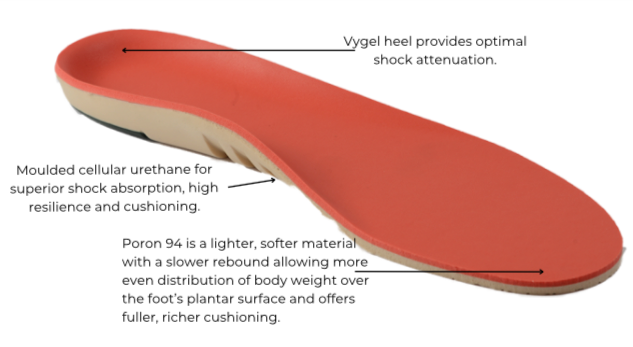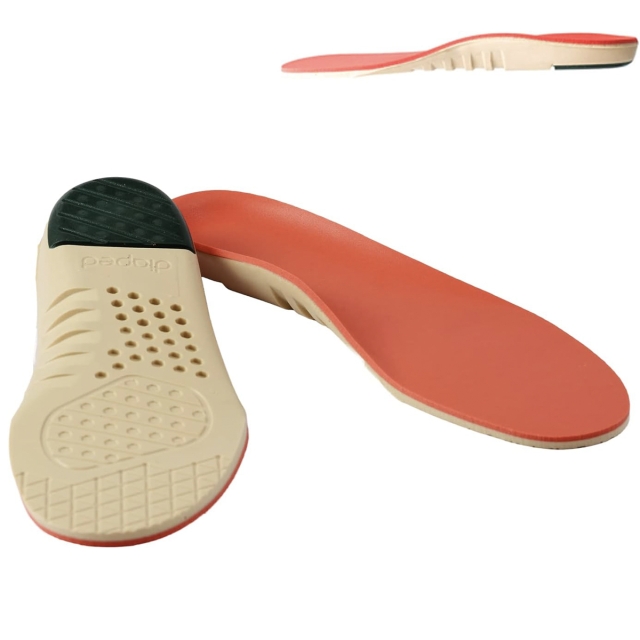How do therapeutic insoles support diabetes and pressure relief?

Therapeutic insoles are designed to provide, support, alignment, and relief for various foot conditions or biomechanical issues. They help support the arch, redistributing pressure evenly across the foot and providing stability. They can correct biomechanical imbalances in the feet by aligning the foot properly, and can help alleviate associated discomfort or prevent injuries.
The design of therapeutic insoles takes into consideration the specific needs of diabetic individuals. They are crafted with materials that offer cushioning and support to reduce pressure points on the feet, helping to prevent sores and injuries that could be detrimental to someone with diabetes.
The DuoSoft Plus is the ultimate cushioning insole that is designed for people with diabetes, arthritis, or other conditions that result in sensitive feet.

These insoles are designed with features such as arch support and shock absorption to provide additional comfort and reduce strain on the feet. By promoting proper alignment and weight distribution, therapeutic insoles help alleviate discomfort associated with diabetes-related foot issues.
For information on the Duosoft Plus, click here.
Here are 5 top tips for preventing pressure ulcers in diabetic patients
- Regular skin inspections – patients with diabetes should conduct a daily skin inspection to check for regular signs of redness, irritation or wounds
- Pressure relief strategies – diabetic patients should change positions frequently to relieve pressure on vulnerable areas such as heels and elbows
- Blood sugar control – diabetic patients should maintain a stable blood sugar level as it is essential for wound healing and preventing conditions in diabetic patients. Managing medication, diet and exercise can aid in reducing the risk of pressure ulcers
- Appropriate wound care – Diabetic wound care requires gentle cleaning with mild soap and water followed by the application of prescribed topical ointments or dressings
- Nutritious diet – a balanced diet rich in vitamins, minerals and protein plays a significant role in promoting tissue repair and skin health among diabetic individuals. Encourage a diet that supports overall wellbeing and aid in managing diabetes
If you would like to read more about diabetes, click here - https://www.diabetes.org.uk




